Today, quick relation from our last Thursday game. This time it was an alternative history, what would happened if the Algeciras Conference went wrong in 1906. For that purpose we used Angus's collection of pre-dreadnought ships and Perfidious Albion rules.
Dziś szybki raport z naszej ostatniej gry czwartkowej. Tym razem była to alternatywna historia, czyli co by się stało, gdyby konferencja w Algeciras w 1906 zakończyła się fiaskiem. Do tego celu użyliśmy kolekcji przeddrednotów Angusa i zasad Perfidious Albion.
SCENARIO/SCENARIUSZ: Angus Konstam
UMPIRING/PROWADZENIE GRY: Angus Konstam
SCENERY/SCENERIA: SESWC
FIGURES & MODELS/FIGURKI i MODELE: Angus Konstam
1. Forces. Siły
FRANCO RUSSIAN FLEET/FLOTA FRANCUSKO ROSYJSKA
(Bill, Campbell, Bartek)
Will be updated/Będzie uzupełnione
GERMAN FLEET/FLOTA NIEMIECKA
(Peter, Neil, Angus)
Will be updated/Będzie uzupełnione
2. The game. Gra.
It was quick and funny game. Both fleet started the game from the opposite corners and both very quickly formed the lines, Germans one big and Allied two separate. I received to command Russian "Slava" and French "Gaulois" and followed Bill's Russian ships: "Pantelejmon" and "Tsesarievich". Soon both sides discovered that the fighting on the long distance will not bring any results, so the lines started to closed the distance. Soon it brings some results. The first sunk ship was "Deutschland". Sadly, soon after my ships get under heavy fire of all German ships and "Gaulois" had to withdraw, because she lost all main guns and "Slava" finished her existence with a big explosion. German seems to be closer to victory, but then their leading ship and the very last get sunk. "Hessen" get hit from leading Russian ships and the "Brandenburg" from Campbell's French battleships. The game was over as Germans decided to turn to Kiel.
To była szybka i zabawna gra. Obie floty rozpoczęły grę po przeciwnych rogach i obie szybko utworzyły linie, Niemcy jedną wielką a Sprzymierzeni dwie oddzielne. Ja dowodziłem rosyjską "Sławą" i francuskim "Gaulois" i podążyłem za rosyjskimi okrętami Billa: "Pantelejmonem" i "Cesariewiczem". Wkrótce obie strony odkryły, że walka na dużym dystansie nie doprowadzi do rozstrzygnięcia i linie poczęły skracać dystans. Wkrótce okazało się to owocne. Pierwszym zatopionym okrętem był niemiecki "Deutschland". Niestety, wkrótce moje okręty znalazły się pod ciężkim ogniem niemieckich okrętów i "Gaulois" musiał się wycofać, pozbawiony głównej artylerii a "Sława" zakończyła egzystencję potężną eksplozją. Wydawało się, że Niemcy są dużo bliżej wygranej ale właśnie wtedy ich okręty, wiodący i zamykający szyk zostały zatopione. "Hessen" został trafiony pociskami z wiodących okrętów Rosyjskich a "Brandenburg" ogniem francuskich pancerników Campbella. Gra była zakończona, poniewaz okręty niemieckie uciekły do Kilonii.
 |
| Pantelejmon on fire. Palący się Pantelejmon. |
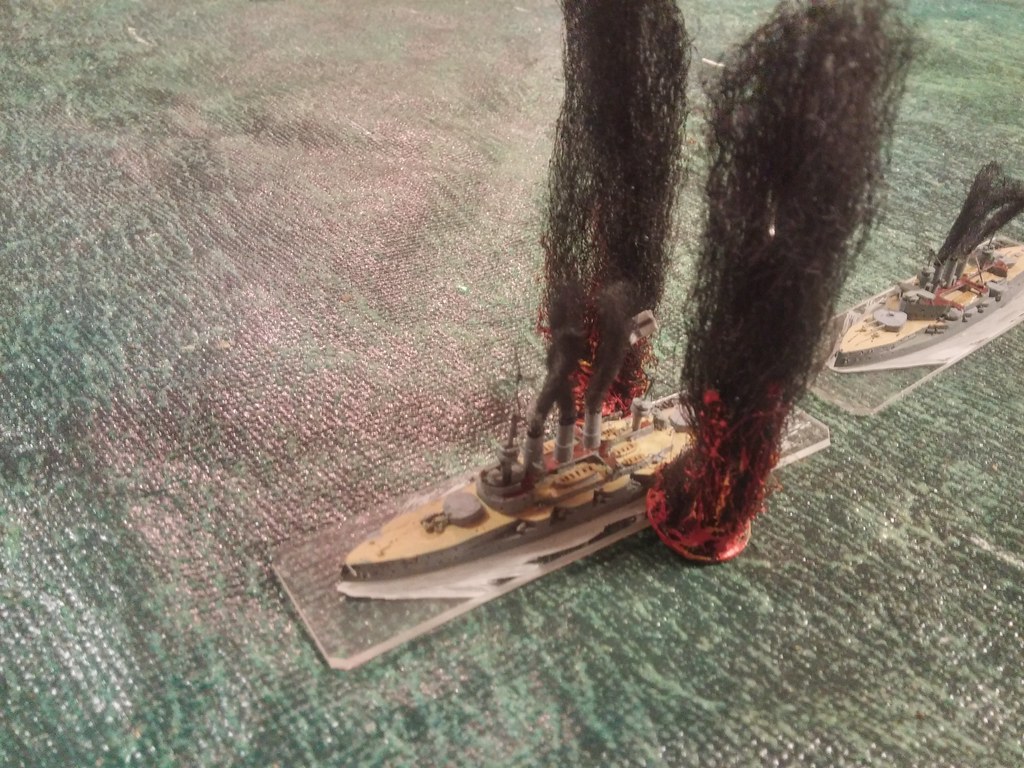 |
| Last moment of Deutschland. Ostatnie chwile Deutschlanda. |
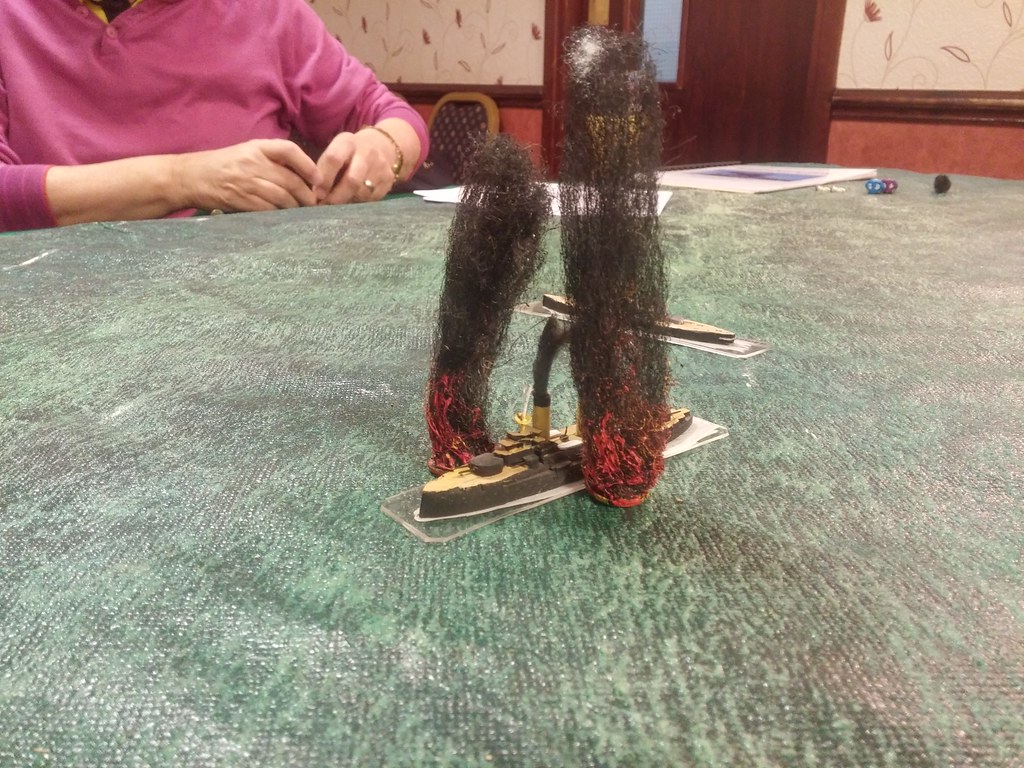 |
| Slava's last minute, behind her Gaulois leaving the battle. Ostatnie minuty Sławy, za nią opuszczający pole bitwy Gaulois. |
 |
| Explosion on Brandenburg. Eksplozja na Brandenburgu. |
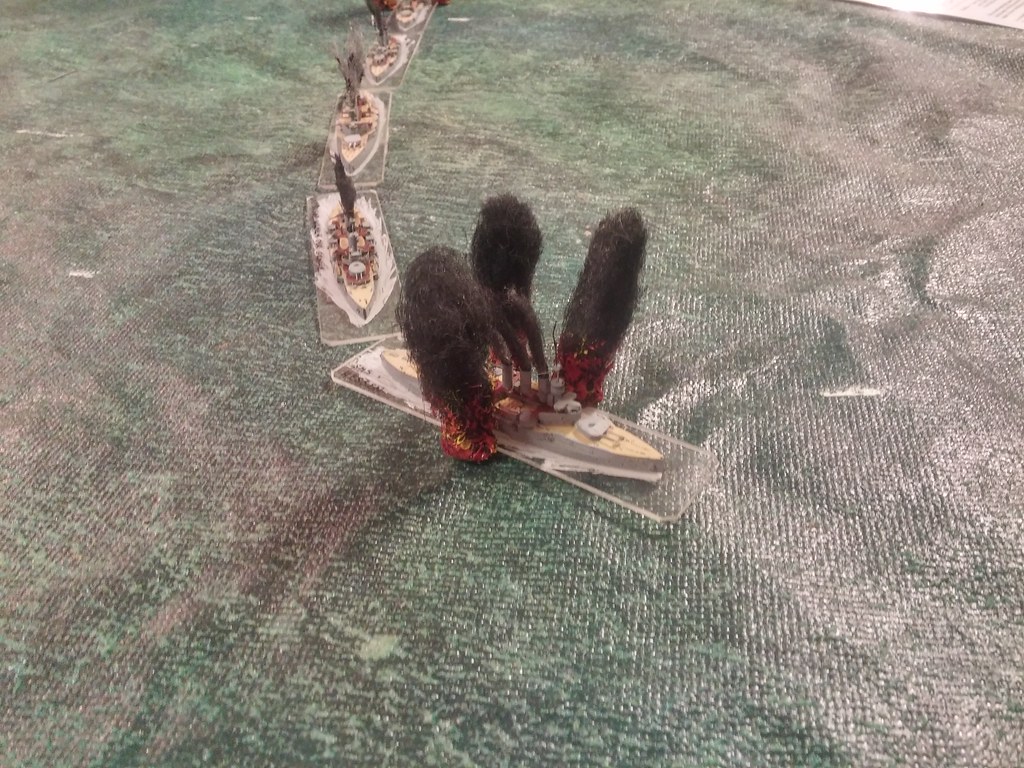 |
| Hessen |
3. Links. Linki.
Much more detailed report on Angus website:
Dużo bardziej szczegółowy raport na stronie Angusa:
Campbell (SESWC):
Flickr:

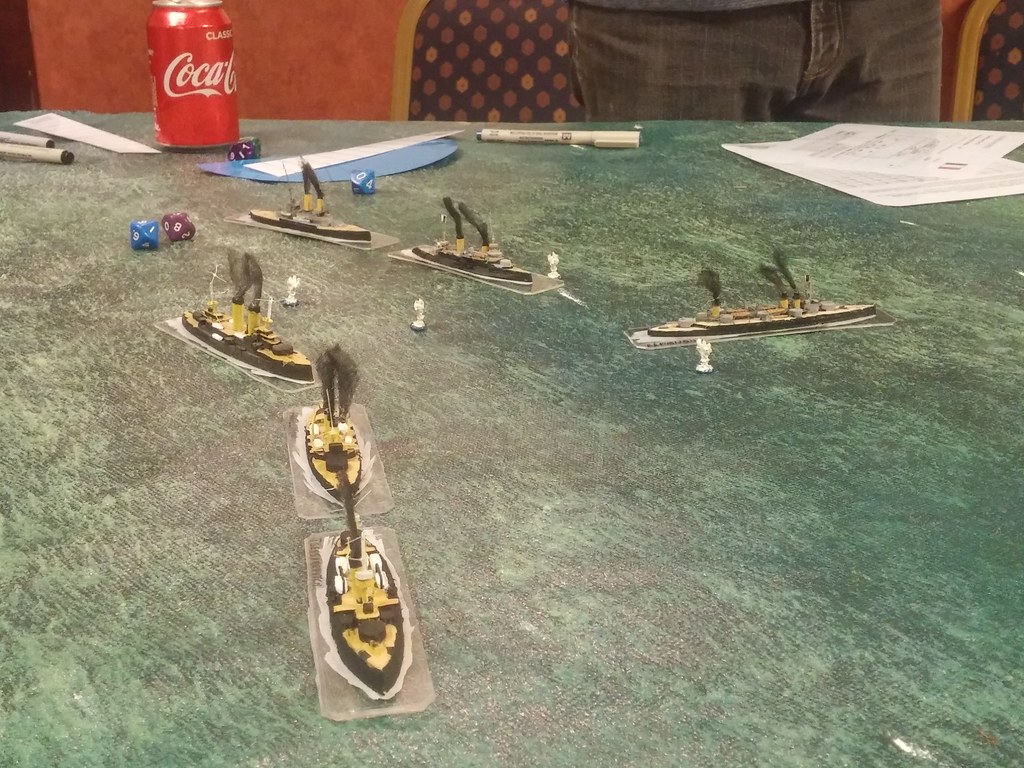
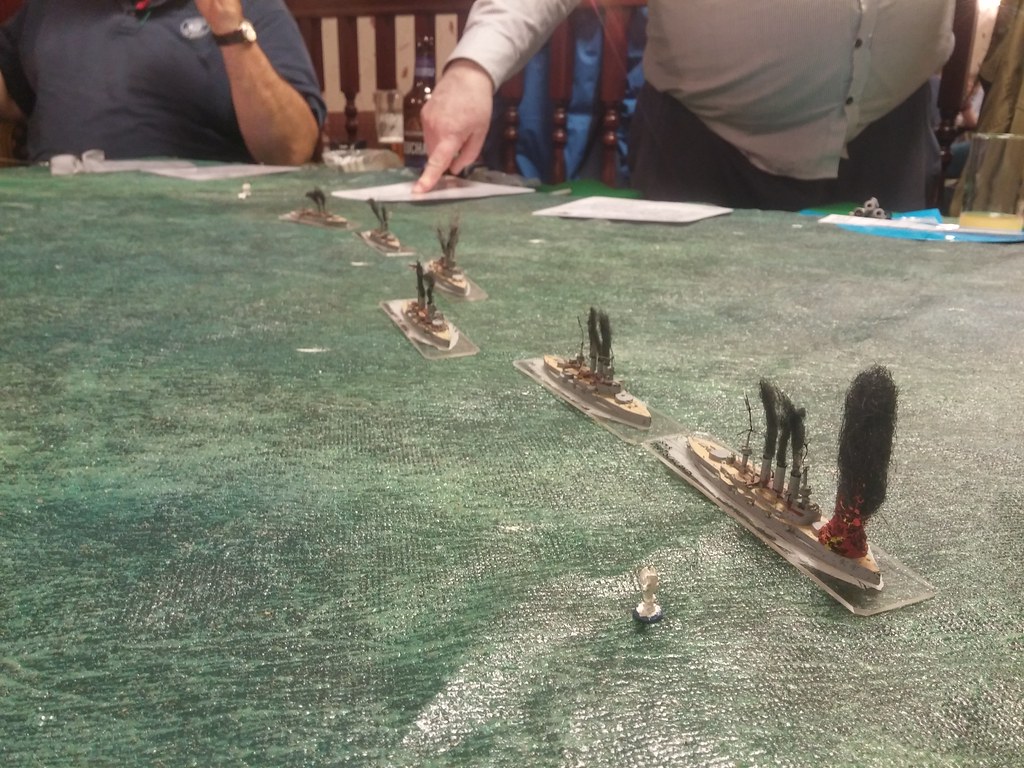
Sounds great, beautiful ships and very impressive explosion markers...
OdpowiedzUsuńThank you.
UsuńWygląda wspaniale. dzięki za raport :)
OdpowiedzUsuńProszę bardzo :)
UsuńMiły i konkretny raport. A sama taktyka walk - jak z bitew żaglowców w XVII i XVIII wieku.
OdpowiedzUsuńDziękuję. W tej materii to dużo się nie zmieniło, jedynie zasięg ;)
UsuńAle łodzie podwodne i lotniskowce mogły wprowadzić pewne urozmaicenie.
UsuńPrzeciwnicy się przestali po prostu widzieć ;) Reszta pozostała bez zmian.
UsuńNice to see some unusual ships on the table, great game.
OdpowiedzUsuńThank you.
UsuńGreat game Bart!
OdpowiedzUsuńThank you.
Usuń